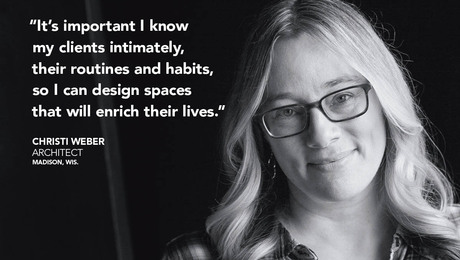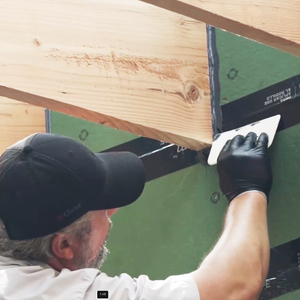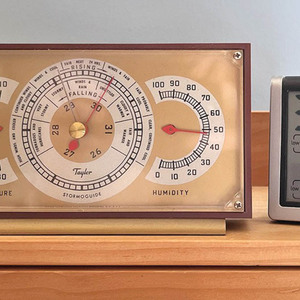My wive and I are installing new kitchen cabinets and plan to have under cabinet lights on the wall cabinets. We are interested in the “linear” systems that have lamp holders mounted on special wire every 4 to 6 inches because of the continous lighting and they are dimmable.
We would like to know the pros and cons of 12 v vrs. 24 v systems, especially on energy usage. Also, the pros and cons for the low voltage systems in general. We have heard that the 24v system is better for runs of 15 ft or longer to avoid voltage drop at the ends. Ours is only 7ft.
Can anyone shed some “light” on this? 🙂
Thanks!
FredC


















Replies
Worry more about the design/quality of the setup. Most of those light systems are really chinsy and fall apart almost before they're installed. Get the best quality you can find, with reliable connectors (that won't work loose) and lights that fasten firmly in place (vs a friction fit with their housings).
We do a lot of undercab lighting, and prefer the Kichler xenon-bulb units. Sold in sizes of 1, 2, and 4-bulb lengths, they can be linked together to handle long continuous runs.
View Image
We like the fact that they are self-contained systems, needing no remote transformers, thus we simply bring 110V romex to the location, and wire away.
1-inch in height, they mount up under the cabs easily, and are hidden behind light rails we build in at 1-1/4" height.
With an on-off high-low rocker switch on each (it is there in the pic at bottom R) they can be hardwired and switched locally, or switchwired and even dimmed from a nearby wallswitch.
While we are at it, we do all kitchen counter power receptacles with undercab continuous plugmold strips, mounted at the wall/cab junction behind the lighting units. Mounted to a wood strip with a 45 bevel-ripped face, the plugmold faces out and down, allowing appliances easy plug in just about anywhere.
That way, no matter how we finish the backsplash area, with tile, or stone, or solid surface, we have no ugly wall receptacles to bug up the design, look, or installation.
We use Juno Trac 12 linear lighting, the kind of stuff you are thinking about for undercab, but we use it if we are lighting ceilings indirectly with cove-mounted systems. We only go 24V when the run lengths dictate.
View Image
Our new favorite little recessed can fixture for downlighting onto a kitchen countertop from a soffit, is the line of low-voltage MR11 minis from Prima Lighting. Really cool. Here is a pic of one in white, but there are lots of finish choices for the 2.75" diameter die cast aluminum trim.
View Image
And if we do in-cab lighting, we use the Hafele 12V xenon pucks, little things that snap fit into a hockey-puck sized hole bored into the cab carcase roof. The come with accessory lenses, and in a nice choice of finishes for the trim rings.
Here is one shown in black, in its full-dress surface-mount trim. We strip off the removable surface-mount cylinder, and plug it into our prepared drilled housing, for a recessed look.
View Image
Edited 10/18/2006 8:46 am ET by Gene_Davis
Cool stuff, Gene.
I'm curious how you transition the romex from the wall to the cabs, presumably it enters an octagon or rectangular wall box, but then what?
Thanks,
Scott.Always remember those first immortal words that Adam said to Eve, “You’d better stand back, I don’t know how big this thing’s going to get.”
Take a look at this pic.
View Image
Every run of these light units has a "starter" module, the tadpole shown in the pic above the light box, and it is mounted to the underside of the cabinet, with its "110 cable entry port" end right close to the hole in the wall where the 110V romex is poking through.
The sparkie brings the romex in, strips and connects, and voila, the 110V is stepped down in the starter module's little transformer to the 12V needed. He does the makeup before doing the screwmount to the cab underside, so then when he mounts it, he jams it right to the wall, and you never see any romex, if looking up and under, after installation.
What is shown here is a two-bulb unit. As I said, there are sizes in one, two, three, and four-bulb lengths. To do a long run, combinations of them are either direct-plugged together (see the feature on the pic, lower R) or spread out and connected with what I call "jumpers," available from Kichler.
Thanks for the extensive info on the low voltage lignting(and everyone else as well for responding. I think we're stuck on the linear system because our kitchen is in a great room type set up and from some viewing angles when seated you will see under the wall cabinets. I plan to hide the linear strip with a cabinet wood lip and I think it will hide easier if its a strip and not a wider unit.
If not for that factor I think we'd go with something like your favorite or maybe the puck type lights.
Thanks again,
Fred
On one we just booked, we'll do the Juno Trac 12 linear for the undercab runs, instead of the Kichler, but for a different reason than you.
In retrofit wiring like we are up against for this one, it is simply far easier to run the 12v wiring than to do all the romex runs.
Find a way, if you can, to use those little Prima minicans for task lighting. They are really nice.
12vRegards, Scooter"I may be drunk, but you're crazy, and I'll be sober tomorrow." WC Fields, "Its a Gift" 1934
Mine are the 24V.
Happier than a pig in shid with them. Mine use a festoon bulb. The total run in my kitchen uses 34 lamps. I find that I need to replace a bulb a month. As far as if they fall apart or not? I've had them for 5 years. One holder out of those 34 lamps got corroded so that a bulb won't lite in it. And I haven't fooled with fixing it. But it's not missed because the light cast by the others is so smooth. Best installed in a custom cabintry application due to the cleaner appearing install.
You should note that these bulbs are pricey and should be bought online in bulk. About $1.50 when bought by the gross.
http://forums.taunton.com/tp-breaktime/messages?msg=68010.36